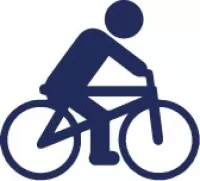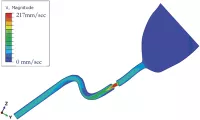Cycling and Trauma
Our group has studied national and local trends and cost of bicycle trauma. We have examined the impact of cycling on urinary and sexual health in men and women. We have examined the impact road trauma and vibration to cyclists’ in the seated position. We have studied the epidemiology of genitourinary injury, demonstrating how common bicycle trauma presents to the emergency room.
Epidemiology of Urinary Symptoms, Sexual Dysfunction in Men and Women
We have examined the influence of PTSD on urinary and sexual function in veterans. We have examined how mental health, diet and exercise influences the urinary health of men and women. We have published a number of manuscripts exploring the urinary and sexual wellness of men who have sex with men and women who have sex with women. We have studied the complications of gender-confirming genital surgery.
Health Services Research and Disparities
Our group studied and published on the racial/ethnic composition of the urologic workforce, active surveillance management of prostate cancer in the safety-net, and a visual patient reported outcome measure for urinary symptoms for patients with low-literacy. We recently published a paper on the recruitment of minorities into phase 3 prostate cancer trials in the Journal of Urology. We have published extensively on the urologic workforce.
Urethral Stricture Disease: Clinical, Translational, and Basic Science
We have done extensive work studying outcomes in reconstructive urology using patient reported outcome measures. We want to better understand the patients perspective and learn from it to improve care. We have developed a conjoint analysis (a marketing tool to understand consumer preference) to determine patient perspective on urethral stricture disease. We have created a disease specific patient reported outcome measure for urethral stricture disease. We have published extensively regarding patient reported outcomes in urethral reconstruction, surgical outcomes and refinement, and post-surgical surveillance protocols. We have studied the microbiome of men with urethral stricture to better understand why scars form. We have performed physical and fluid dynamic modeling of urethral stricture disease. We have examined urethral anatomy using 3-D printed models, cadavers and computer simulation. This work will help us better understand the impact of urethral anatomy on urine flow.


